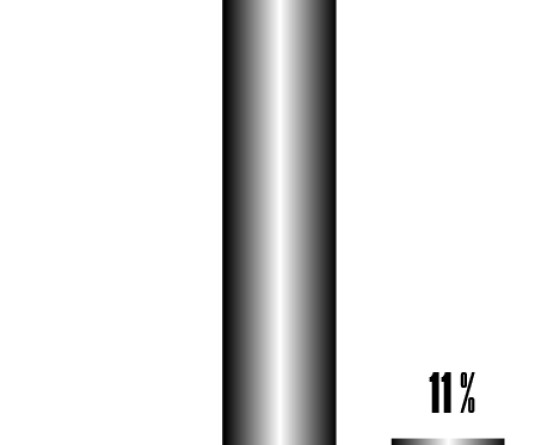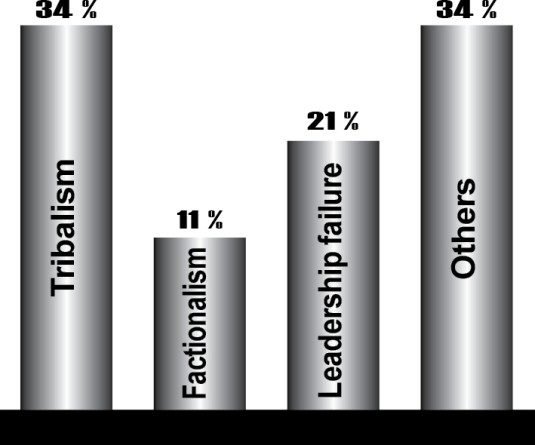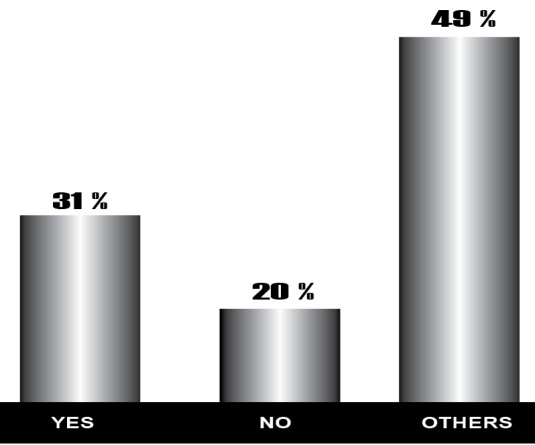
Those who voted ‘Not Safe’ had this to say:
• Just look at Kohima traffic and you will know that public transport system in Nagaland is not safe. There seems to be no regard for safety and the way drivers are driving, it seems like we are living in a banana republic.
• 1. No Limit (sitting capacity, speed)
2. Most drivers mix drinks and drive.
3. No strict issuing of driving license.
4. Limited driving test
• The government’s apathy towards rendering proper and safe service to what is most commonly used by people is hard to accept. Unlike corrupt officers who have vehicles for there conveyance, they fail to understand the problem faced by the public service users. As they don’t travel (never) by bus they won’t know what is going on. Not only the drivers are drunk but most of the staff in NST are also drunk. I don’t know how they are able to coordinate. Unless strict measure is implemented, the government should not allow public transport to run. What is the meaning of traveling convenience when you don’t know or where you are going to die in accidents. Insurance should be given to victims and no matter how hi-tech the buses are or efficient the drivers are, the road will always remain as it is. Because of unsafe roads and government’s in ability to build better roads (the reasons best known to them-- corruption) the roads are also to be blamed.
• Whether it is run by the Govt. or the Private Networks, safety measures are not adequately adopted and addressed for the transport systems in the State. As our land basically consists of hills and terrains, the areas need to be looked into are: technical checks & balances; proper training to the drivers & handymen; alert to thief & robbery, especially in the highways; no drunk-driving; etc.
• Common-sense must be imparted to all NST drivers for the safety of people.
• NST authority while trying their best to be respectable Christians are depriving the tourist and travelers on Sundays, but not taking into account the fact that the regular drivers are not taught to be what they should be doing. Nagaland is the only Christian place in the world not providing food and lodging and transportation on Sunday. Funny!!
• The selection of a driver is done through the backdoor not taking into account their capacity and determination. This is a wonderful example of corruption even at the expense of people’s lives.
• God alone knows when the drivers remain sober.
• Not safe at all. Seems like as soon as a vehicle in Nagaland gets the License, the driver’s somehow think it also means license not only to use the road but also to use the airspace and fly as well. Vans, sumo’s, buses...are all the same. On arrival, most of the passengers look like they just landed from a roller coaster ride. Hair flying, body shaken and a wry smile which makes you wonder whether they want to cry or laugh...the light hearted smile away. The heavy hearted are burdened with the thought of their return journey... To add a friend’s dad experience traveling from Dimapur to Kohima in a van was like encountering a hurricane, right after coming out of a washing machine…
• Most drivers have no clue about safety measures and driving ethics. Public transport drivers are mostly drunks. State transport department have no programs to enable safe driving measures. Education dept have no subject on road safety. Too many cars. Roads are too rugged and narrow. No protection on highways. Road sign are too small and inadequate. BRO messages are meant only to entertain tourists.
• Because my father too was killed in the Longleng bus incident
Those who voted ‘Unsure’ had this to say:
• Safety depends mostly on the human being. Most often human being can control some technical failure also if he/she is alert. But he cannot if he/she is alert.
• Do we even have something called public transport in Nagaland? Seriously, we must ponder on that question. But what I do know is that the transport we have is not safe.
• We do not see the truth behind the accidents. The PEOPLE blame each other or the drivers or some say because of road conditions.






